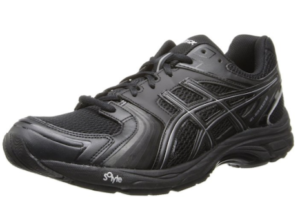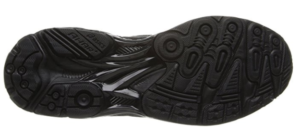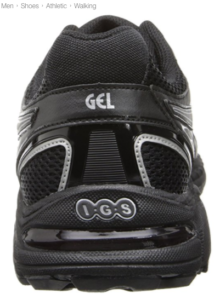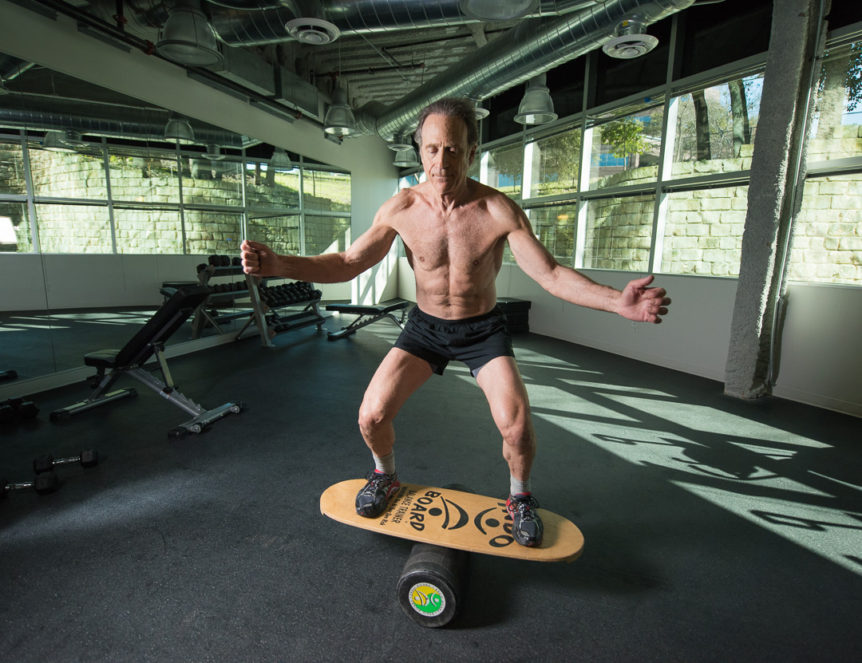Proper Shoes Aid Balance to Prevent Falls
A good shoe can prevent falls which are one of the leading causes of injuries to seniors. Have you sustained an injury due to falling? If so you’re one of the many seniors who have. The shoes you wear can either assist or reduce your ability to prevent falls. Match your shoes to your activity.
The dress shoes that look good in an office setting are not the shoes to wear on a long walk. That’s not what they’re designed for. We wouldn’t drive a sports car on a rutted dirt road. It might handle it for a while before tossing us in a ditch. Leather bottomed dress shoes can slide out from under you leaving you lying in the ditch.
I experienced a fall in my carpeted office. I liked jogging down the hall of our suite and turning fast into my office. Turning fast in leather bottomed shoes on a carpeted floor sent me into the air and down. The smooth bottoms didn’t grip the carpet. I know better. That should not have happened. Good luck, nothing damaged but my pride. I won’t let that happen again.
Stop wearing these types of shoes that increase the chance of falls:
- A loose and worn out shoe flops around and fails to provide the stability to prevent falls.
- Slip-on shoes do not provide the snug yet comfortable fit your feet need to prevent falls.
- Backless slippers can slip off while you’re walking.
- Slippery soled shoes can slide out from under you leaving you on the ground.
- Shoes with heels more than 1-inch high place stress on the balls of your feet by moving your weight forward.
- Flip flops provide zero stability, move on their own and are likely to flip flop you on your head.
- Narrow-heeled shoes create ankle roll and cause rather than prevent falls.
- Shoes with very thick soles diminish your feel of the surface you’re on and raise your center of gravity.
Wear These Types of Shoes That Reduce Your Chance of Falling:
- Lace up or velcro fastened shoes provide the best fit.
- Shoes with a collar that supports your ankle.
- Non-slip soles made from hard rubber, not leather.
- A firm heel wrap that holds your heel in place.
- Choose shoes that have an insole that fits YOUR foot.
- A well-padded tongue protects the top of your foot.
Here’s a good place to start Shopping For Shoes
Read on for more details about why shoes affect your health as you age and how to choose good ones.
Your Feet get Bigger as You Age
As we age our feet don’t grow but they do spread out. That’s the result of a lifetime of carrying our weight. When that happens we need a larger shoe size. I experienced that myself when I reached my 60s. My favorite running and hiking shoes started cramping my feet. I had to go up one size to get the right fit. The Goodwill store received a bunch of my almost new shoes. I had to buy new ones. Ladies, I know you love to buy shoes. Guys, open your wallets. You must pay that expense. There’s no choice if you want to keep your feet healthy and prevent falls.
Women and High Heels
Ladies, we know you look good in your high heels. But what are you doing to your body?
Here’s what’s happening:
- Damage to toes and toenails. Compressing toes together can cause ingrown toenails and bunions.
- Tilting your weight forward places more stress on your knees and hips.
- Increased risk of osteoarthritis.
- Muscle cramps and pain.
- Increased likelihood of losing balance and falling.
Read About High Heel Remedies from the American Osteopathic Association HERE
Features That Your Walking Shoe Must Have:
First, it should have solid construction. Check for thick threads in the stitching and extra stitching. You don’t want shoes that wear out before they should. They must provide you many miles of dependable service. You don’t want a shoe that comes apart when you’re miles from home.
It should have some mesh on the sides and top for breathability. You don’t want your socks to be soaking with sweat. Note how the front of this shoe tilts upward. That helps to prevent those annoying toe catches that could trip you up.
The best shoes have a sturdy lacing system. They have thick laces and many possible adjustments.

Mesh on top and sides
Check the sole of the shoe. The sole should look like a knobby off road tire. It should have enough thickness to last. This type of sole will provide the grip you need on any surface except ice. We shouldn’t be out walking on ice anyway. We’re adventurous, not stupid.
If by some unforeseen chance you do find yourself on the ice there is a method I’ve used to survive. Walk lifting your knees. Then move your foot forward while it’s in the air. Bring the foot straight down and place it on the ice. Move your other foot to the raised position and repeat. Don’t allow your body weight to create forward momentum. That’s what causes sliding. If there’s any grass around walk on that instead of the sidewalk or street.

Knobby Sole
Your walking shoe needs full heel stabilization. If your heel slides around your ankle will role. That causes discomfort loss of balance and may start a fall. Note the heel of this shoe. It comes up high in the back for full support. It has thick padding for comfort. The heel strike is the right thickness to absorb force. This shoe has shock absorbing gel built in. That’s especially helpful when you’re break dancing with your grandchildren.

Stabilized Heel
The Right Way to Try Before you Buy:
Look online to see what’s available. Do your research. The best walking shoes will cost from $50 to $150. I’ve found that the more expensive models from the same manufacturer are better. They feel better and last longer.
There are many good shoe companies. That’s a lot different than way back in the old days when we were kids. All I remember is: “Did I want red or black Keds?”
Don’t buy your new shoes online unless replacing a pair that has worked well. You need to go to a store that has a huge selection. Nike, New Balance, Asics, Adidas, Brooks are some of the best. There are several others. Over the years I’ve happily used many of them. What’s most important is what shoes fit your feet the best.
How to Try on Shoes:
Don’t walk into the store with cold feet. The best time to try on new shoes is when your feet have already been working. They’ll be expanded to full size. Hey, this is easy guys. Take your gal to the mall. By the time you get to the shoe store you’ll have walked for miles.
Wear the right socks. That means thick sweat-wicking athletic socks. The kind they sell at the athletic shoe store. Buy several pairs. Take an extra pair with you on long walks. I learned that in the army. A fresh pair of dry socks saves the skin of your feet from rubbing off.
Take your time and try on several different shoes. Talk with the clerk who is helping you. Explain that you are in a learning mode and that you do intend to buy. Make it clear that for that reason you’ll need more time than the average shoppers. A good store will be happy to provide that service.
Try on both shoes. Walk around the store for a few minutes. Bounce around. Walk fast and slow. Do they feel good? If not then they’re the wrong shoes for your feet. The right shoes will feel good as soon as you walk in them.
Test the shoes for balance. Hold onto a counter top or your friend’s shoulder for balance. Does the shoe feel like it’s assisting your balance? It should feel stable with no wobble. The right shoes help to prevent falls.
Don’t be in a hurry. This is an important decision. I don’t need to say anything about this to you women. You know the importance of your shoes and no one is going to rush you.
Have Your Feet Examined by a Podiatrist Before Buying New Shoes
Overpronation or Supination?
Overpronation means that your ankles turn inward. Supination means that your ankles turn outward. Most feet are affected by one of those conditions. A podiatrist will measure the angles of your feet and ankles. Molds of your feet will be made. From those molds, the podiatrist will create custom orthotic shoe inserts.
See our article Good Balance Starts With Foot Alignment HERE
Summary of Proper Shoes Prevent Falls:
- See a podiatrist before buying new shoes.
- Use your new custom orthotic shoe inserts when trying on new shoes.
- Look at shoes online but only buy in a store.
- Only shop in a store that has a large selection from the big name manufacturers.
- Try on new shoes only after you’ve walked around enough for your feet to expand.
- Try on several different types and styles.
- Take your time.
- Walk around the store and test your balance in each shoe.
- Only buy shoes that feel good.
- Buy several pairs of moisture-wicking athletic socks.
- Throw away old broken down shoes before they throw you down.
Share this Post
